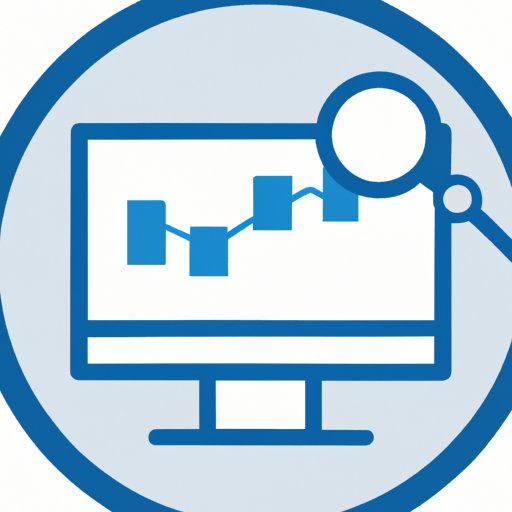Introduction
Stock trading is one of the most popular ways to invest in the financial markets. But with so many different options available, it can be difficult to know where to start. In this article, we’ll explore the different options for trading stocks, as well as the basics of technical analysis and the benefits of investing in index funds.

Exploring the Different Options for Trading Stocks
When it comes to stock trading, there are several different options available. These include online brokerages, full-service brokerages, direct market access, and day trading platforms.
Online Brokerages
Online brokerages allow investors to buy, sell, and trade stocks without the need for a physical broker. They offer a wide range of features, such as real-time quotes, streaming news, and advanced charting tools. Many online brokerages also provide educational resources, such as webinars and tutorials, to help investors learn how to trade stocks.
Full-Service Brokerages
Full-service brokerages offer more personalized services than online brokerages. They typically provide research and advice, as well as access to exclusive products and investments. However, they often charge higher fees and commissions than online brokerages.
Direct Market Access
Direct market access (DMA) is a type of trading platform that provides traders with direct access to the stock exchange. This allows traders to bypass the middleman, which means lower fees and faster execution times. DMA is usually reserved for more experienced traders, as it requires a greater level of knowledge and understanding of the markets.
Day Trading Platforms
Day trading platforms are designed for active traders who want to take advantage of short-term price movements. These platforms offer advanced charting tools and real-time analytics, as well as access to high-frequency trading algorithms. Day traders must have a good understanding of the markets and be willing to take on a higher level of risk.

Understanding How to Trade Stocks on Different Platforms
Before you begin trading stocks, it’s important to understand the basics of technical analysis. Technical analysis involves studying charts and market data to identify trends and predict future prices. It can be used to make informed decisions about when to buy and sell stocks.
It’s also important to understand the different types of orders available for stock trading. Market orders execute immediately at the current market price, while limit orders allow traders to set a maximum or minimum price for their trades. Stop orders are used to limit losses, while trailing stop orders are used to protect profits.
Finally, it’s important to do your own research when trading stocks. This includes researching the company, its fundamentals, and any news or events that may affect its stock price. You should also research other assets, such as currencies, commodities, and indices, to get a better understanding of the markets.

Comparing Fees and Commissions of Different Brokers
When choosing a broker, it’s important to compare the fees and commissions charged for trading stocks. Transaction costs can vary significantly between brokers, so it’s important to shop around and find the best deal.
You should also look at the margin rates offered by different brokers. Margin rates determine how much you’ll pay in interest when you borrow money from your broker to buy stocks. Finally, you should consider the account minimums required by different brokers, as these can vary significantly.
Learning the Basics of Technical Analysis for Stock Trading
Technical analysis is an essential skill for stock traders. There are several key concepts to understand, such as identifying trends, recognizing support and resistance levels, and utilizing moving averages. Understanding these concepts can help traders make informed decisions about when to buy and sell stocks.
Evaluating the Pros and Cons of Automated Trading Systems
Automated trading systems are becoming increasingly popular with traders. These systems use algorithms to analyze the markets and execute trades automatically. While they can offer advantages, such as speed and accuracy, they also come with certain risks, such as overtrading and poor decision-making.
Investigating the Benefits of Investing in Index Funds
Index funds are a type of mutual fund that tracks an index, such as the S&P 500. Investing in index funds offers several advantages, such as diversification, lower expense ratios, and tax efficiency. Index funds can be a great option for long-term investors who want to diversify their portfolios.
Conclusion
Stock trading can be a lucrative way to invest in the markets, but it’s important to understand the different options available. Online brokerages, full-service brokerages, direct market access, and day trading platforms all offer different features and advantages. It’s also important to understand the basics of technical analysis, order types, fees, commissions, and the pros and cons of automated trading systems. Finally, index funds can be a great way to diversify your portfolio and reduce your risk.
(Note: Is this article not meeting your expectations? Do you have knowledge or insights to share? Unlock new opportunities and expand your reach by joining our authors team. Click Registration to join us and share your expertise with our readers.)
